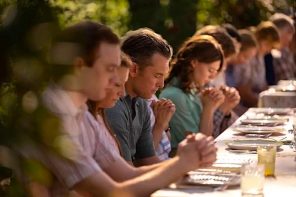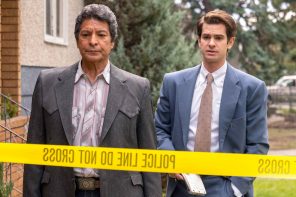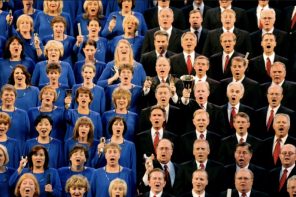Last weekend, I joined members of Affirmation—the nation’s oldest organization of LGBT Mormons—for their annual gathering, held this year at Kirtland, Ohio, where early members of the Mormon movement built a community and Mormonism’s first temple in the 1830s.
Attending the conference were hundreds of LGBT Mormons ranging in age from their early 20s through their 70s: gay men, mostly, but lesbians too; white, Asian-American, Latino, African-American, and Native Hawaiian. Many served LDS proselytizing missions, raised children, and held positions of responsibility in their local congregations before coming out of the closet. Some have stopped participating in LDS institutional life, while others have continued by walking a carefully negotiated path. Many gay Mormons in attendance had partnered with other gay Mormons. I met an older couple from New York City who are planning to marry now that the state will let them; another couple of young Mormon men from San Diego—both blonde, one sporting a rodeo championship belt buckle—are also recently engaged. Mormons often prefer to marry within the faith, after all.
On Sunday morning, Affirmation members gathered at the historic Kirtland Temple, a three-story structure built in the 1830s under the direction of Mormonism’s founder Joseph Smith. Now a designated historic site, the temple is owned and cared for by members of the Community of Christ, the second largest denomination in the broader Mormon movement. Formerly known as the “Reorganized Church of Jesus Christ of Latter-day Saints,” the Community of Christ split from the members of the Church of Jesus Christ of Latter-day Saints in the 1840s. They never accepted polygamy, and they never followed Brigham Young across the plains to Utah. Today, the Independence, Missouri-headquartered Community welcomes women into the priesthood and openly gay people (including non-celibate and partnered LGBT people) into membership. The Community of Christ offered Affirmation an institutional welcome of a kind LGBT Mormons rarely experience, providing tour guides, meeting spaces, and the opportunity to worship within the Kirtland Temple itself. Although the temple is not used for the same kinds of sacred rites that take place in contemporary LDS temples, it is still recognized by all branches of the Mormon movement as a space of sacred importance.
In the Kirtland Temple, the members of Affirmation did exactly what Mormons do wherever we gather for worship. They sat in pews. They convened and closed their services with prayer. They sang historic hymns from the LDS canon like “Now Let Us Rejoice” and “A Poor Wayfaring Man of Grief.” They bore testimonies of faith. Some testified to the singular truths of Mormonism. Others simply expressed their gratitude to God for guiding them through the difficult challenges of being a gay Mormon. Many related heroic stories of devotion, self-sacrifice, and courage. John Gustav-Wrathall, a gay Mormon writer, described his effort to keep the Spirit with him at all times, through prayer and scripture study as well as spiritual sacrifice and moderation. John Behn, an LDS father of a gay son—Affirmation’s vice-president—related the words he heard God speak to him when his son came out: “Your son is a part of you, and you are a part of your son, and nothing should tear you apart. Go on this journey together.”
On Sunday morning, when I joined the members of Affirmation in the Kirtland Temple, I did exactly what Mormons so often do when we gather for worship: I cried. And I was not alone. Many Affirmation members were overwhelmed to be welcomed as gay Mormons into a sacred Mormon space, a historic temple that represents the first organized aspirations of the Mormon movement. Tears flowed freely when the Affirmation choir of gay and lesbian Mormons sang the stirring Mormon classic “The Spirit of God Like a Fire is Burning”—the very hymn our ancestors sang to dedicate the Kirtland temple 175 years ago, in 1836, on a day when, as the folklore goes, neighboring villages reported seeing a cloud of fire hovering over Kirtland.
Standing in the sunlit white interiors of the temple, Liam, a young gay LDS man who had travelled all the way from London just to take part in the conference, wept openly. His mind was on the leadership of his Church, the Church of Jesus Christ of Latter-day Saints, in Salt Lake City.
“Don’t you think, if they could just see us”—Liam wiped his face and swallowed hard—”if they could just see us here, don’t you think they would change their minds?”




